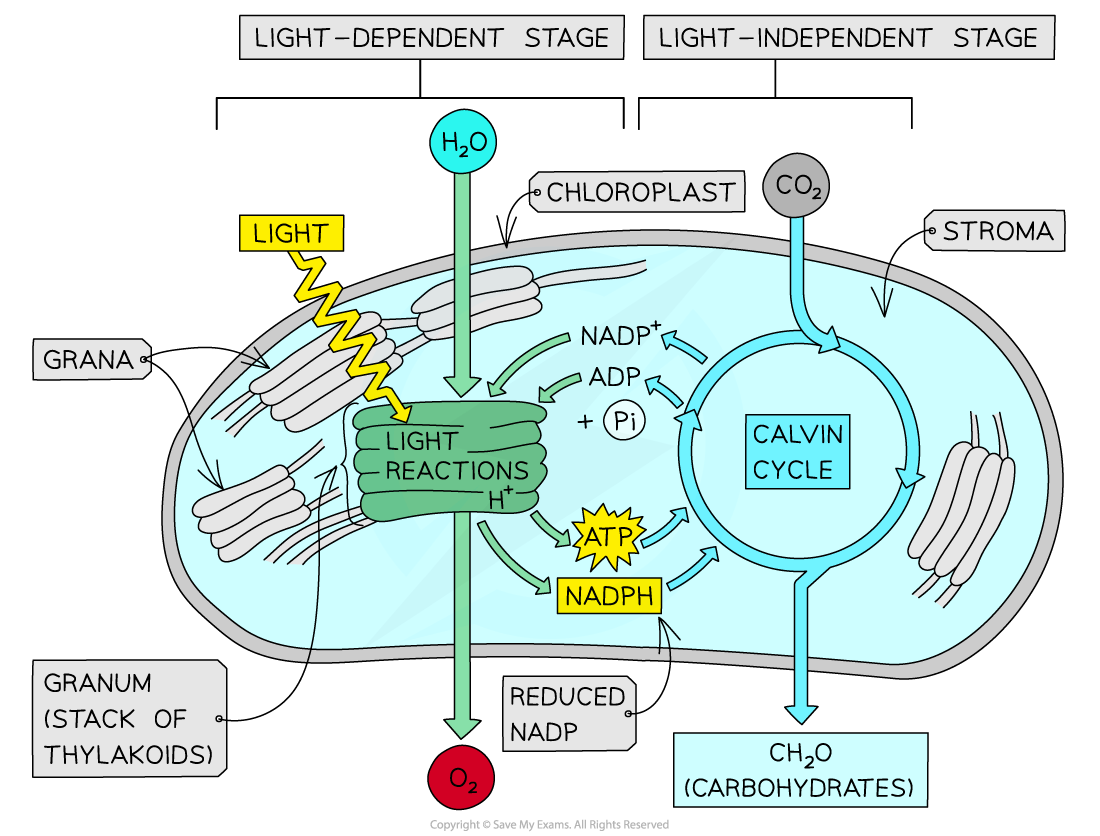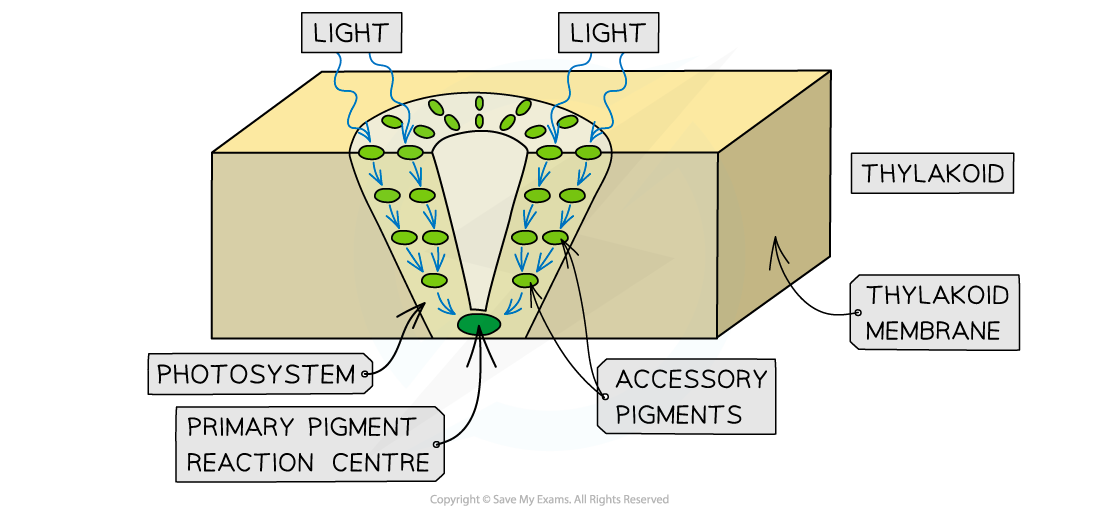- 翰林提供学术活动、国际课程、科研项目一站式留学背景提升服务!
- 400 888 0080
IB DP Biology: HL复习笔记8.3.1 Light-dependent Reactions
Location of the Light-dependent Reactions
- Photosynthesis takes place in two distinct stages:
- The light-dependent reaction, which relies on light directly
- The light-independent reaction, which does not use light directly
- Both these reactions take place within the chloroplast
- The light-dependent reaction takes place in the thylakoid intermembrane space and across the thylakoid membrane
- Thylakoids are disc like structures which make up the grana in stacks of up to 100. They contain the photosynthesis pigment chlorophyll. Some may have tubular extensions (intergranal lamellae) which join up with thylakoids in adjacent grana
- The thylakoid membrane contains a transfer chain where electrons are passed along a number of electron carriers in a series of oxidation-reduction reactions
- The light-dependent reaction takes place in the thylakoid intermembrane space and across the thylakoid membrane
Exam Tip
The thylakoid intermembrane space is also referred to as the thylakoid lumen.
Products of the Light-dependent Reactions
- During the light-dependent reaction light energy is converted into chemical energy in the form of ATP and reduced NADP
- ATP and reduced NADP are produced from the photolysis of water by light energy:
- Water is split into protons, electrons and oxygen
- The protons are picked up by the hydrogen acceptor NADP+ thereby reducing it (NADPH, also called reduced NADP)
- ATP is generated from the phosphorylation of ADP
- The useful products of the light-dependent reaction are transferred to the light-independent reaction within the chloroplast
- Oxygen is given off as a waste product of the light-dependent reaction

The two stages of photosynthesis
Exam Tip
NADP is an electron carrier that is important in photosynthesis. When it takes up protons the NADP becomes reduced and can be written as NADPH. NADP can also be written as NADP⁺.
Excitation of Electrons
- Chloroplasts contains the pigment chlorophyll, plus other accessory pigments
- These are grouped together as structures called photosystems which are located in the thylakoids
- Photosystems contain many chlorophyll molecules and a reaction centre
- Two types of photosystems exist:
- Photosystem I - contains the reaction centre P700 (as it is activated by a wavelength of light of 700nm)
- Photosystem II - contains the reaction centre P680 (as it is activated by a wavelength of light of 680nm)
- Chlorophyll molecules within Photosystem II absorb light energy, in the form of photons, and pass it to the reaction centre P680
- Electrons within the reaction centre of Photosystem II are then excited to a higher energy level by the photons of light
- The chlorophylls within the reaction centre are said to be photoactivated
- Excited electrons are able to be donated to an electron acceptor in a reduction reaction
- In the light-dependent reaction the electron acceptor is called plastoquinone
- Plastoquinone accepts two electrons from Photosystem II and is reduced
- It then moves to another position in the thylakoid membrane
- This process is repeated with another plastoquinone molecule
- In total two plastoquinone molecules are reduced and four electrons are lost from the reaction centre

A photosystem used in the light-dependent reaction to excite electrons
Exam Tip
Rather confusingly, the first photosystem to be activated in the light-dependent reaction is Photosystem II. Later in the reaction, Photosystem I is involved. This is because Photosystem I was the first to be discovered and therefore was named first.
Photolysis
- Photolysis occurs in Photosystem II during the light-dependent reaction of photosynthesis
- This occurs following the reduction of plastoquinone in Photosystem II:
- The reaction centre acts as an oxidising agent and causes water molecules (that have been moved into the leaf by transport up the xylem vessels) to split during photolysis
- Water splits into protons, electrons and oxygen
- The oxygen diffuses out of the leaf through stomata
- The electrons are passed into the electron transport chain
- The protons are picked up by the carrier molecules NADP forming reduced NADP
- The reaction can be summarised as 2H₂O → O₂ + 4H⁺ + 4e⁻
- The photolysis of water generates the electrons needed for:
- Replacement of the electrons lost from the reaction centre in Photosystem II
- Subsequent reactions of the light-dependent reaction
转载自savemyexams

早鸟钜惠!翰林2025暑期班课上线

最新发布
© 2025. All Rights Reserved. 沪ICP备2023009024号-1








